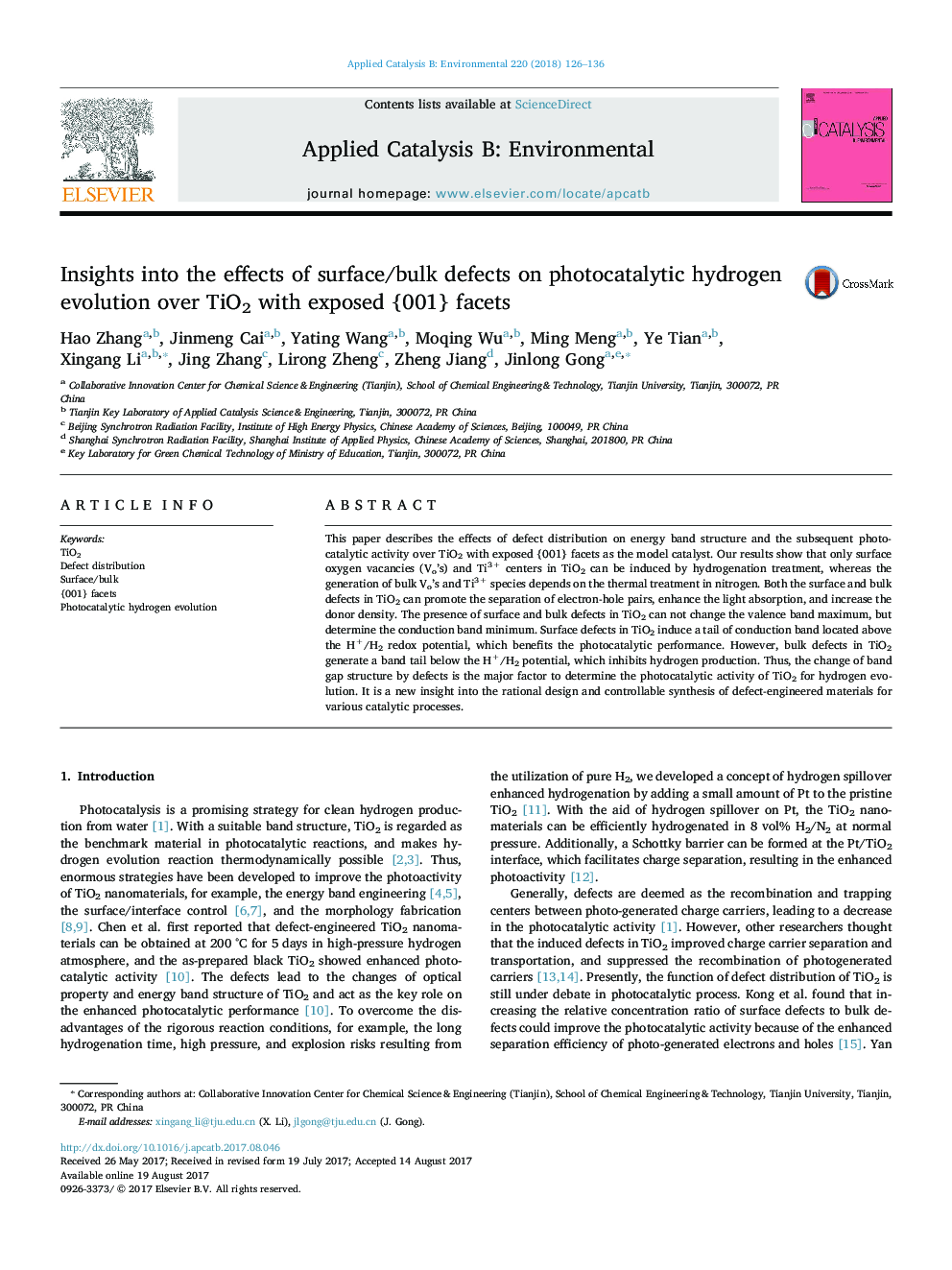| Article ID | Journal | Published Year | Pages | File Type |
|---|---|---|---|---|
| 6453560 | Applied Catalysis B: Environmental | 2018 | 11 Pages |
â¢Surface defect is more beneficial for increasing the charge separation efficiency.â¢Surface defects induce a conduction band tail located above the H+/H2 potential.â¢Bulk defects introduce a conduction band tail located below the H+/H2 potential.â¢TiO2 with surface defects shows enhanced photocatalytic activity for H2 evolution.
This paper describes the effects of defect distribution on energy band structure and the subsequent photocatalytic activity over TiO2 with exposed {001} facets as the model catalyst. Our results show that only surface oxygen vacancies (Vo's) and Ti3+ centers in TiO2 can be induced by hydrogenation treatment, whereas the generation of bulk Vo's and Ti3+ species depends on the thermal treatment in nitrogen. Both the surface and bulk defects in TiO2 can promote the separation of electron-hole pairs, enhance the light absorption, and increase the donor density. The presence of surface and bulk defects in TiO2 can not change the valence band maximum, but determine the conduction band minimum. Surface defects in TiO2 induce a tail of conduction band located above the H+/H2 redox potential, which benefits the photocatalytic performance. However, bulk defects in TiO2 generate a band tail below the H+/H2 potential, which inhibits hydrogen production. Thus, the change of band gap structure by defects is the major factor to determine the photocatalytic activity of TiO2 for hydrogen evolution. It is a new insight into the rational design and controllable synthesis of defect-engineered materials for various catalytic processes.
Graphical abstractDownload high-res image (167KB)Download full-size image
